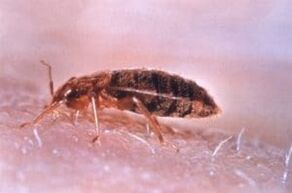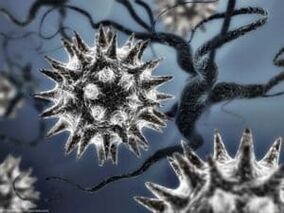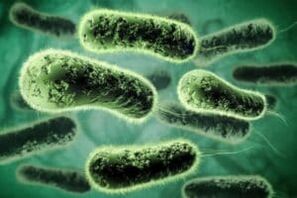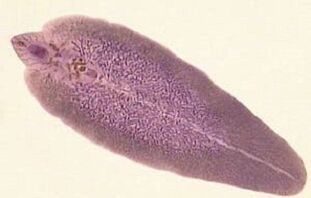After understanding the way the parasite enters the human body, preventive measures can be taken to come into contact with possible sources of infection. What is a worm, as an intestinal parasite, has been known to many people. However, ordinary people know little about the species in the circulatory system, subcutaneous lymph, muscles, brain and internal organs.
All types of parasites in the human body are classified as representatives: protozoa, flat and round worms, arthropods and their larvae.Viruses, pathogenic bacteria and fungi can be classified as parasites, but they can be divided into different categories. Infectious diseases are divided into: viruses, fungi, bacteria and parasites. The classification of human parasites includes-unique fish (common van der Ria) that can penetrate the human urethra (random host).
Parasites and their types

Who are the parasites? These creatures live at the expense of another person, have no genetic relationship with another person and enter an antagonistic relationship, that is, interfere with life. The concept of parasitic diseases should not be extrapolated to microorganisms living in the body without causing special harm. In nature, there are plant and animal parasites, depending on the type of host. During the operation of this lifestyle, parasites and host systems continue to play a role. The first task: the second one to live without killing him for a long time.
Classification of parasites by type:
- Location location: external and internal parasites (external and internal parasites).
- In the form of life: a form of constant parasitism (obligation) and free movement. Under certain conditions, this form begins to exist at the expense of another organism (facultative parasite).
- Time of contact with host: temporary and permanent parasites (fixed and periodic).
In the food chain, animal parasites usually feed on herbivores or carnivores, and are second-order or third-order consumers. The way the parasite eats deprives the host of nutrients and/or leads to the destruction of cells and tissues. Host confrontation often occurs because dangerous residents release toxic metabolites. This can cause certain symptoms (allergies, digestive diseases, signs of damage to various internal organs).
Virus

Viruses are intracellular parasites with protein genetic structure. Due to the material of the cells, they can reproduce themselves. The virus is an obligate parasite.
According to classification, according to the type of genetic material, isolate viruses containing RNA and DNA. The first group of intracellular agents includes:
- Enterovirus. They multiply in the digestive tract and cause problems in various human organs.
- Rhinovirus. The cause of ARVI.
- Influenza, rabies and encephalitis virus.
- Papilloma virus.
The virus enters the target cell, makes its process subject to itself, integrates into the genetic material or is located in the cytoplasm, and then replicates (reproduces). Then, cell death occurs due to cell lysis, apoptosis or deformation of the membrane structure. Some representatives (papilloma virus, Epstein-Barr virus) can degenerate cells into malignant cells.
How does the virus penetrate inside:
- Airborne.
- Pass through the gastrointestinal tract when drinking water and eating.
- Passes through the skin and outer layers of mucous membranes, such as the conjunctiva.
- Through arthropod vectors (insects, tick bugs).
- Due to the use of non-sterile medical equipment (syringes, pipettes).
Each virus adapts to a specific cell, using receptors to distinguish targets.
Bacteria

occupies a special place in bacteria, rickettsiae, and intracellular parasites. These are the most primitive representatives similar to viruses. In humans, these microorganisms cause: typhus, tick-transmitted ricketts disease, and Rocky Mountain spotted fever. People are infected with Rickettsia through the bites of ticks, fleas and lice.
Other intracellular parasites of chlamydia cause one of the most common venereal diseases (chlamydia) and cause severe eye inflammation, infant pneumonia and enteritis.Dangerous bacteria include:
- Salmonella is the pathogen of typhoid fever.
- Tetanus stick.
- A pale spirochete that causes syphilis due to the difficulty in diagnosing the disease, leading to delays in treatment.
- Mycobacterium tuberculosis may not appear for a long time and then become an open form.
- Escherichia coli, because of its ability to acquire antibiotic resistance. Causes gastroenteritis, meningitis and urinary tract infection rarely occur.
External parasites such as Staphylococcus aureus are known to cause widespread skin infections. The most dangerous consequences of its activities: pneumonia, meningitis, osteomyelitis, endocarditis, severe shock due to exposure to bacterial toxins and sepsis (called blood poisoning in daily life).
Mushroom

Pathogenic fungi-human parasites are better protected from drugs than bacteria. The most common fungal disease is candidiasis (thrush), which is located on various mucous membranes and has a weak immune system. Mushrooms of the genus Candida live in the body of any healthy person, and only when the protective function fails, will it cause obvious damage. Conditionally pathogenic bacteria and fungi are borderline microorganisms between non-pathogenic and pathogenic categories. Therefore, in general, they are not classified as parasites.
Pathogenic micellar fungi are human parasites that usually cause outer skin diseases:
- Corneal mycosis. The reproduction of fungi occurs in the keratinized areas of the epidermis or hair scales (Trichosporum tuberosum, variegated).
- Dermatophytes. The pathogen not only affects the epidermis, but also the dermis, nails and hair (tinea, knot ab).
- Deep fungal disease. Damage to the skin and nearby tissues and internal organs. These include histoplasmosis-a serious systemic mycosis and aspergillosis-damage to mucous membranes and skin caused by Aspergillus.
The classic sources of bacterial and fungal infections are patients, animals, soil, dirty water and food.
Protozoa
Protozoa are another single-celled parasites of bacteria and fungi. Which protozoan parasites of a person are isolated depending on the location of the system?
- Certain amoeba are facultative parasites. The most famous is the dysentery amoeba, which enters the body as a cyst (in a static form). The pathogen enters the large intestine (in the form of a cavity), then penetrates into the mucosa, and affects various internal organs with the bloodstream. Amoeba are aquatic organisms, so the main source of infection is dirty water. Acanthamoeba keratitis is a rare eye disease called Acanthamoeba keratitis, which has become more frequent due to the popularity of contact lenses.
- Flagellates (Leishmania, Giardia, Trichomonas). Trichomonas is the most common disease of the genitourinary system, and its complications (infertility, prostatitis, premature birth, etc. ) are dangerous.
- Bee complex (spore worm). Except for colpodellids, this group includes only obligate parasites (Toxoplasma gondii, Plasmodium, Cryptosporidium, coccidia, cysts). Sporangia cysts enter the human body after being bitten by an insect, eating an infected animal, or drinking water.
- Ciliates. For humans, orchid is dangerous. Due to the activities in the large intestine, it can cause diarrhea and ulcers in the intestinal wall. Ciliates are the largest pathogenic single-celled organisms.
The simplest human parasites cause protozoan infections (protozoa). In protozoa, which parasites live in the human nervous system? For example, the pathogens of toxoplasmosis and cerebral malaria. Among the amoeba, the facultative parasite Neglerius Fowler can infect the nervous system.
Multi-cell
Multicellular parasites include flatworms, roundworms, spiders and insects. Usually, the former settle in a human body (in various systems and internal organs), and certain species migrate or infiltrate (Lishta, spinous spinous fish larvae and hookworms, schistosomiasis) into the subcutaneous layer. Worm is the collective name for all worms that cause worm infections (helminthiasis).
Common diseases caused by flatworms
Group of trematodes (syngeneic trematodes):
- Peritonitis. Pathogen: Types of liver flukes, such as cats and Siberian flukes. Eating poorly processed river fish can cause infection.
- Fasciitis. Caused by liver and giant flukes. Infection occurs through consumption of contaminated water or coastal grass.
- Schistosomiasis. The pathogens of schistosomiasis (especially schistosomiasis) mainly live in hot climates. They penetrate the skin in contact with water.
- Paragonimiasis. The cause of the disease is paragonimiasis found in hot climates. Hot freshwater crabs or crabs infected with worms and poorly handled are dangerous.

The life cycle of parasites from flukes is very complex, including several larval stages and gastropods as intermediate carriers. Kes are animal parasites of vertebrates and can be used as temporary and permanent hosts. Each larval stage can develop without fertilization. The equipment that Flukes uses to fix and feed inside the host is a suction cup.
Tapeworms are obligate parasites of the human small intestine. Their body is made up of segments (proglottidid), which periodically break off and come out with the fertilized egg. The life cycle stage of the tape bug must include the finna (blister bug), which is a temporary owner. The permanent host swallows the Finn, and the Finn develops into a cone (adult) form. The structural feature of tapeworm is that it has no digestive system and absorbs nutrients on its entire surface.
The most common:
- Bovine tapeworm (Abrasal tapeworm) causes teniarinhoses disease. The infection occurs through the meat of cattle. The muscles of cattle are contained by Finns. These Finches are formed in the body after the animals eat eggs.
- Pork tapeworm (armed tapeworm) is the causative agent of cysticercosis (Finn stage) and tendinopathy (adult). In addition to suckers, worms are also equipped with hooks. One person can perform the functions of intermediate and permanent owners at the same time.
- A wide range of tapeworms can cause bitrichiasis. The intermediate hosts are arepods and fish. A person can be infected through salt-deficient caviar and cooked or fried freshwater fish.
Parasites feed on blood and tissues (flukes) or digested food (carrying worms).
Worms
Are roundworms (nematodes) a few common types of parasites in humans?

- Scar worm disease. C worm diseases include migratory (larval) and intestinal (adult) stages. The larvae penetrate the wall of the small intestine, move to the lungs, bypass the liver and heart, and go through the molting stage in turn. It enters the mouth, is swallowed again, and matures in the small intestine.
- Pinworm. Pathogens of enteropathy feed on the final and initial areas of the small and large intestines and multiply in the ileum. Females lay eggs in the anal fold, causing severe itching.
- Vlasoglav is the cause of trichomoniasis. These parasites in the human body invade the mucosa of the initial part of the large intestine and feed on tissue fluid and blood.
- Trichinella can cause dangerous trichinosis. In severe cases, the nervous system is damaged. These are the real killers, whose larvae penetrate the wall of the small intestine and are carried throughout the body. Usually, they enter the striated muscle, they can penetrate the eyes, cause pain and facial swelling, enter the lungs, and cause coughing. So far, no treatment has been invented that can completely recover.
- Toksokara. Distinguish between larval (multiple) and fictitious (intestinal) toxoplasmosis. The invasion is characterized by the severity of the allergic reaction. The larvae spread all over the body, enter the tissues, wrap and form granulomas.
- Hookworms are more common in the tropics and subtropics. After hookworm infection, the worms in the intestine secrete proteolytic enzymes, which break down the wall and reduce blood clotting. Parasites in the human body are caused by the introduction of larvae from contaminated water through the skin.
- Escherichia coli and related species are tropical parasites. The disease they cause, amyloidosis, may be asymptomatic for decades. Due to reduced immunity, carriers of worms have a high risk of death (60-85%).
- Rishta is a subtropical worm that causes dracunculiasis. The larva penetrates the intestinal wall. Females reach the subcutaneous layer, and when the host is in water, they expel the larvae through the skin. The temporary host is a-footed crayfish.
The particularity of the habitat of parasites will affect the way they enter the human body: they come into contact with contaminated water or land, and live carriers in the larval stage. Many representatives of round worms have no intermediate hosts and are worms. Their infections mainly occur through contaminated water, unwashed hands, fruits or vegetables, and eating meat from wild animals.
Treatment and dire consequences of helminthiasis
An important method of diagnosing helminthiasis is blood test. High concentrations of eosinophils (a type of white blood cell) and other signs of infection indicate the presence of worms and many pathogenic protozoa in the body. How is helminthiasis treated? Medications are used to relieve symptoms and perform specific treatments. Use anti-allergic (desensitization) and detoxification therapies. Basically, drugs are given by infusion (using a dropper), sometimes injections are used:
- A drug that replaces plasma and eliminates the effects of toxins. Isotonic dextrose solution and saline.
- Vitamin C and B6.
- Sodium bicarbonate (soda), calcium chloride or gluconate.
- A formulation used at high temperatures.
- In difficult situations (using hormonal drugs with hepatitis or allergic myocarditis). Potassium intake is combined with them.
- Medicines for heart failure and edema.
There is evidence that certain parasites (such as the dwarf tapeworm) cause cancer. The stem cells of the larvae can degenerate into cancerous cells. Parasites can indirectly cause cancer by weakening the immune system. Interesting data have been obtained in studying the effects of flukes on the liver. Due to exposure to waste uptake, ordinary cells become cancerous. Parasites are mainly located in the digestive system, but their larvae can penetrate various internal organs. For example, in the kidney (hydatidosis, schistosomiasis), myocardium (cysticercosis, hookworm disease), and liver (hydatid disease). Parasites and worms in humans usually affect the nervous system. Known cerebral cysticercosis, echinococcosis, pneumococcosis and schistosomiasis.
Arthropods
The order of insects includes well-known ectoparasites such as fleas, bed bugs, and blood-sucking ters. Unlike lice, they are temporary parasites, that is, they live irregularly with the help of the host. Among arthropods, arthropod parasites include the well-known sc mite. The mating of males and females occurs on the surface of the epithelium. The parasites in the human body then lay their eggs on the keratin layer of the skin, causing severe itching. Many people know what ixodid tick is. These are arthropod spider arthropod parasites, including the most famous taiga tick representative-the taiga representative is a carrier of dangerous infections (t-transmitted encephalitis, Lyme disease). Among blood-sucking ters, there are: non-malaria and malaria mosquitoes, mosquitoes, mids, biting ges, horse flies and fruit flies. These arthropod parasites can cause strong allergic reactions and are also carriers of dangerous viral and bacterial infections. Some flies, especially g flies, deposit larvae under human skin, causing myopathy. The larvae can penetrate into the body.






































